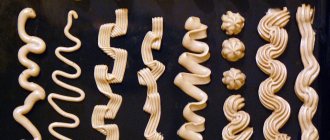Do you want to stylishly decorate your room for the holiday, spending twice or even three times less than your planned budget on flying balloons? The secret is simple: do not overpay for the services of professional decorators - you can cope with this task yourself. In fact, you can inflate balloons with helium at home, and quite simply. Do you have any doubts? Take advantage of the proposed master class - and in just half an hour you can inflate a whole armful of bright decorations, ready to soar to the ceiling!
To do this you will need:
- a certain number of foil or latex balloons, depending on how exactly you want to decorate the room;
- HiFloat is a polymer glue that is used to treat the walls of latex balloons before inflation;
- portable helium tank;
- beautiful ribbons with which you will tie the balls, as well as scissors for cutting them;
- weights necessary for composing figures and securing accessories;
- packages for transportation (if required);
- a little patience and inspiration.
Ready? Then let's get started!
How to inflate balloons with helium at home: methods
So, we know two types of filling balloons - one, with a regular pump or mouth, then the balls are light, but at the same time they are still drawn “to the ground”. These balls are good for decorating flat surfaces, as well as floors in photo zones.
The second filling method can be called “flying balloons”, since balloons are filled with gases that are lighter than air and therefore they rapidly rise up.
In the second method, there are two directions to inflate the balloon. The first one is more expensive, but the ball will please you for 2-3 weeks. This is a portable gas cylinder with liquid, which, penetrating into the balloon along with helium, forms a dense film inside the balloon and prevents gases from escaping through the latex. The second method is more economical, but it is worth noting that balloons inflated with soda and vinegar last only 12-14 hours.
Braid
To tie inflated balloons, use a narrow decorative polypropylene ribbon (5 mm wide), which is sold in rolls of 250 m (metalized) and 500 m (regular). For adult parties, the standard end of the ribbon is 1.5 m long. for children's parties, use longer ends of the braid, 2 - 2.5 m long (depending on the height of the ceilings). In any case, if you use a 10 liter balloon, one spool of tape will be enough for all the balls. The braid is cut with ordinary scissors as the balloons are inflated.
How to inflate balloons using a helium balloon?
To work, you will need durable balloons and a portable tank with helium and liquid.
We put a ball on the balloon tube so that its edges are pressed tightly and sealed. We hold the balloon during operation so that it does not fly off and the helium is not wasted.
We unscrew the valve and the ball begins to be filled through the tube. Please note that the process occurs quickly, and accordingly it is better to keep the valve open for no more than 3-4 seconds. It’s better to open the valve for a few seconds to add more, rather than overfill the balloon and cause it to burst.
Having closed the balloon, carefully remove the ball and immediately tie it; if you doubt the strength of the knot, you can make two.
All that remains is to tie the ribbon and decorate the room!
Using a chemical reaction
Chemists came up with an interesting way to inflate a balloon without a pump. For the experiment you need to have a plastic two-liter bottle, table vinegar, baking soda, and a ball. You can take several bottles and inflate 2-3 toys at the same time.
It will be fun for children to take part in a chemical experiment, but we must not forget about safety precautions. Put on glasses and gloves for the little experimenter so that he understands the importance of the situation and the danger to the eyes.
Fill the bottle with one-third of the vinegar. Next, pour a few tablespoons of baking soda through the funnel. Immediately after this, a balloon should be pulled over the neck of the bottle. During the chemical reaction, carbon dioxide will be released and fill the volume of the ball. When the latter is inflated to the desired size, holding the hole with your fingers, remove the ball from the bottle and tie it with one of the already known knot options.
These were ways to inflate a balloon without a pump. But the process can be carried out with its help.
How to easily and quickly inflate a thin balloon with your mouth?
It would seem that it could be easier than inflating a balloon with your mouth. If you think it's easy, then you've never inflated 100 balloons in an hour! Especially if these are high-quality, dense balls.
- Knead the ball: stretch it in different directions, but so as not to tear and there are no cracks;
- Now we take the ball and pinch it with our thumb and forefinger so that the tail is on one side and the hole on the other;
- We bring the ball to our lips and, as if we were kissing, pressing it to our lips;
- We take a big breath in through our nose and exhale through our mouth, and so on until the ball is completely inflated;
- Tired and need a break? Pinch your thumb and index finger together and take a breather. Have you rested? Bring it to your lips and continue to blow;
- At the end, just press with two fingers and tie the ball.
What to consider when inflating a latex balloon
To prevent the balloon from bursting during inflation, you must:
- Before inflating, lightly knead and stretch the latex.
- Determine the exact size of the product.
- Fill it with air or helium until it reaches the specified size.
- Carefully but quickly tie the ponytail.
Flowers for the holiday!
You can inflate the balloon with air or helium, and at first glance this procedure is quite simple. In the first case, you need to securely fix its tail with your fingers and, exhaling air into the product, gradually inflate the ball to the required size.
When inflating with helium, everything is even simpler: the tail is put on a special nozzle, the valve of the cylinder is opened and the souvenir is filled with gas. The most difficult thing in both cases is to determine the correct size to which the ball can be filled with gas.
Some believe that since latex balloons stretch well, they can be inflated to enormous sizes. In fact, the size of each product is indicated on the packaging. The most common are 8, 10 or 12 inches.
That is, a 12-inch version inflated with gas should not exceed 30-31 cm. If the product filled with helium or air exceeds the specified dimensions, then its walls become too fragile and are quickly damaged.
You can tell that the ball is overly inflated by its appearance. In this case, the tail swells and a “pear” is formed in the area of the tie.
How and what to inflate balloons without helium to make it fly?
Do you have a goal to make the ball fly, but don’t have the budget to buy a balloon? We suggest doing without it and inflating it with hydrogen.
Required:
- A small flask or container of this type;
- Measuring spoon;
- Alkali - caustic soda or sodium hydroxide;
- Heated water;
- Foil.
Fill the flask halfway with warm water, tear the foil into small pieces and place it in the water. Add 3 heaped teaspoons of lye and quickly pull the ball itself onto the neck.
We begin to shake the flask so that the lye begins to interact with the foil, while holding the edge of the ball so that it does not fly off.
As soon as the foil dissolves in the liquid and the balloon is completely inflated, you must immediately remove the balloon from the neck and tie it in a knot, otherwise it will immediately begin to deflate.
Let us immediately note that this method is good for preparing a small number of balls, since the process is very long.
Types of balls
There are many types of balls: they differ in shape, material and overall design. We invite you to learn more about what types of balls there are.
- Classic round. The usual look that we are used to seeing at special events. They are made in different colors, with drawings or add photo printing. For example, balloons with the logo of the family coat of arms or with a congratulatory slogan will always come in handy.
- In the shape of a heart. The most popular look that is appropriate for a wedding event or Valentine's Day.
- Punch balls. Large inflatable balloons with thick walls, which are used for carnivals.
- Curly. They are made for children's parties in the form of animals or cartoon characters.
- For modeling. Popular in circuses or competitive events.
- Links. Designed for creating garlands or decor for arches. These balls have two ends for joining together.
- Surprise balloons. A gift option, it is often used to play piñata. The ball is large in diameter, and inside it there are many small balls with candies or small toys.
- From foil. A colorful type of balls that can be of different shapes. A dense and strong ball that can hold air for more than one month. Later we will tell you how to inflate a foil balloon with helium yourself.
How to inflate a balloon using a bottle, soda and vinegar?
And this method is so simple and accessible that even a child can handle it. In addition, the ingredients can be found in any kitchen.
Required:
- 9% vinegar, sold in the nearest supermarket, and which is used for canning;
- Baking soda, which is purchased for baking;
- Plastic bottle with a capacity of 2 l;
- Spoon.
So, first, pour a liter of vinegar (half the container) into the bottle and prepare a ball. It is best if the work process is done with four hands. One pours a tablespoon of soda, and the second immediately pulls the ball. As in the previous methods, be sure to hold the tip of the ball.
Why do balloons burst during inflation?
The most obvious cause of damage to latex balloons during inflation is contact with a sharp object. Sometimes, when inflating a product, you may not notice how, gradually increasing in size, its walls touch the sharp edges of decorations or decor on clothes. As a result, the gift bursts without having time to please the person for whom it was intended.
The second common reason is incorrect or careless fixation of the ball tail. Sometimes, due to carelessness, you can damage the product by excessively pulling it while tying.
But still, in 9 out of 10 cases, the balloons burst due to the fact that they are not inflated correctly. Many may be surprised, but this process has certain rules that should not be ignored.
How to inflate a balloon in a balloon?
In order to inflate a balloon in a balloon, you need to stretch the large balloon in different directions and carefully work out the neck.
Now we place a small ball inside so that the tail looks out from the large ball.
How to inflate a balloon in a balloon?
Inflate a small balloon, tie it and stuff it completely into the large balloon. We also repeat with the remaining 2-3 balls. Now take a large ball and inflate it. As the balls inflate, they will end up in free space and float there.
Balloons
Where they rent balloons you can buy latex balloons, in packs of 100, 50 and 25 pieces. You can choose either simply multi-colored balls (assorted by color) or balls with a thematic design.
If there is a choice, then for outdoor use it is recommended to buy balloons manufactured by Sempertex (Colombia), and for indoor use it is recommended to use Latex Occidental (Mexico). These balls have a round shape and are pleasant to work with.
It is not recommended to buy retail balloons individually, especially those balloons that are sold in non-specialized places. As a rule, Chinese-made products are sold there, which have unpredictable quality.
The main thing to remember is that from one 10 liter cylinder you can inflate about a hundred large latex balloons.
Domestic fireflies
Completely unusual glowing balls can be obtained by inserting mini-LEDs inside each ball before filling them with helium or gas. Powered by small batteries, they can be pleasing to the eye as long as they fly near the ceiling. Most often, luminous elements from keychains, small flashlights, pens or other similar toys are used for this. After the balloons are deflated, the flashlights are removed and the batteries are disconnected. These elements can be used repeatedly in preparation for another holiday or party. The result is a completely unusual effect of fireflies flying under the ceiling.
Three ways to inflate
- Gas installation with helium. You can use it to inflate balloons made from low-porosity materials (in particular, foil balloons).
- A technique for filling balloons with a gas mixture of gases - for example, helium with air. There is an alternative: pump helium inside using an installation, and at the end add air using a pump.
- Electric or conventional pump for filling balloons with air. This method does not require any special explanation. Professional equipment is equipped with additional attachments - for example, to simultaneously fill a ball with confetti.
Check Valve for Foil Balloons
You can deflate a foil balloon with your own hands using a check valve consisting of 2 transparent polyethylene strips that are soldered to each other along the entire length of the edges. On one of the strips, part of the length is more durable thanks to a sealed piece of polyethylene with a bluish tint.
The beginning of the valve, shown as a yellowish line, should be sealed into the neck of the structure. The welded line of polyethylene strips is shown as a grayish dotted line.
The valve is a tube, which is more rigid inside the neck, and softer inside the cylinder of the product. The rigid part is reinforced with a bluish stripe and is intended for contact with the noses of gearboxes or adapters. The softer part of the valve tube, presented in the form of petals, is required to close the gas inside the product.
When helium is injected into the product, the tube begins to open, allowing the gas to freely penetrate the structure. When the jewelry is inflated, under the pressure of the gas hidden inside the product, the soft part of the valve tube will begin to compress. As a result, the closed petals will not allow gas to escape from the product.
In order for the gas to be securely locked inside the foil product, the petals must be very long. For example, if, as the temperature decreases, the gas pressure inside the structure begins to fall, the force compressing the valve petals will begin to increase with possible gas leakage from the product.
When helium leaves the structure, it begins to reduce the pressure inside the product, and as a result, the check valve begins to open more. To quickly leave the ball, a lot of gas must come out.
Balls of thread. Cute unique home decorations
Many people are interested in how to make a ball of thread? These balls are very beautiful, delicate. They make excellent souvenirs and even chandeliers. To create it you need: not very thin threads, non-yellowing glue, Vaseline, a rubber ball.
Inflate the rubber ball to the desired size, apply a thin layer of Vaseline so that the threads do not stick to the ball.
The threads must be lubricated with glue (pour the glue into a convenient container and pull the thread through the glue). Wind the glued threads around the ball and let it dry thoroughly.
Then deflate the ball and carefully remove it through the threads. The ball can be decorated with flowers, beads, ribbons, etc. or use for restoration of chandeliers and other products.
A homemade ball is a wonderful home decoration and a cute toy that is always interesting.
Sealing inflated foil balloons
The foil balloon must be sealed so that it does not deflate after inflating. To do this, you can use a special sealer. However, in its absence, it is permissible to solder the structure with your own hands using a regular iron, which must be heated to a high temperature.
You cannot solder the structure directly, as the material may melt, tear, or create unsightly folds. It is recommended to make a spacer between the hot metal and the foil, which can be served as a thin napkin. The product should be sealed in several places, leaving a small distance between them.
When sealing an inflated foil balloon, there are several points to consider:
- Before sealing, you should check that there are no folds or air in the neck;
- the product must be soldered 2 times, maintaining a distance between solders of 1 cm;
- it is necessary to attach a protruding part of the structure to the sealer, through which inflation occurs;
- it is necessary to test what temperature to set and how long to keep the hot tool for different products (the time will vary depending on the material).
Simple tying of an inflated foil balloon
The check valve, fixed in the neck of the structure, holds the gas very reliably. In this regard, the tape is fixed to the inflated products so that it does not fly away. However, if the tape is tied slightly above the inlet, the strength of the check valve will be compromised and the product will begin to deflate within a short period of time. The braid must be fixed below the inlet hole.
If the air temperature begins to decrease, the pressure from inside the foil structure can drop significantly. As a result, the check valve will begin to let gas through. At the same time, the protruding neck of the ball does not look very impressive. To securely close the structure and hide the neck of the product, it is recommended to use a professional tying method.
Method two: salt and copper sulfate
How to make a gel ball at home? This option requires good preliminary preparation. You will definitely need the following substances and items:
- a little copper sulfate;
- regular table salt;
- water;
- liter plastic bottle;
- a piece of thick aluminum wire;
- hose;
- disposable syringe.
You need to make two holes in the plastic bottle cap. One end of the prepared hose is inserted into one, and a syringe with an aluminum rod attached to it is inserted into the other (small). Use a wire to stir the mixture inside the bottle. Balls will be attached and secured to the second end of the hose. Place a little copper sulfate, salt and water in a plastic container. After all substances are completely dissolved, the bottle is tightly screwed on with a lid. The aluminum rod should sink into the blue water.
The reaction that begins occurs with a strong increase in temperature and usually causes the container to become very hot, so it is better to place the eggplant in a basin or bowl of water. The released gas will very quickly inflate colorful balloons, lifting the spirits of the participants in the action.










